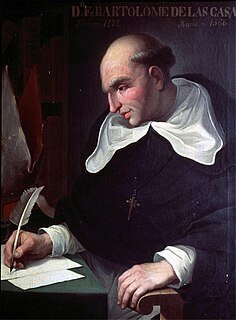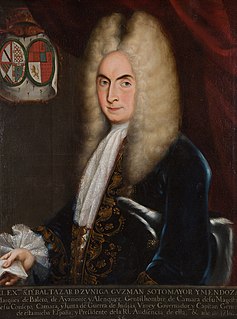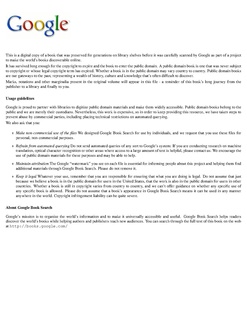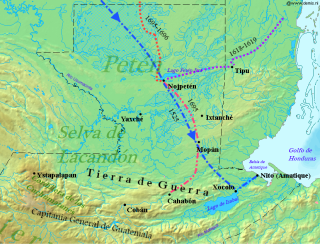
Bartolomé de las Casas was a 16th-century Spanish landowner, friar, priest, and bishop, famed as a historian and social reformer. He arrived in Hispaniola as a layman then became a Dominican friar and priest. He was appointed as the first resident Bishop of Chiapas, and the first officially appointed "Protector of the Indians". His extensive writings, the most famous being A Short Account of the Destruction of the Indies and Historia de Las Indias, chronicle the first decades of colonization of the West Indies. He described the atrocities committed by the colonizers against the indigenous peoples.

Mexican literature is one of the most prolific and influential of Spanish-language literatures along with those of Spain and Argentina. It has internationally recognized authors such as Octavio Paz, Alfonso Reyes, Carlos Fuentes, Sergio Pitol, José Emilio Pacheco, Elena Poniatowska, Fernando del Paso, Juan Rulfo, Amado Nervo, Juana Inés de la Cruz, Carlos de Sigüenza y Góngora, and several others.
Eugenio Fernández Granell, recognised as the last Spanish Surrealist, was an artist, professor, musician and writer.

Baltasar de Zúñiga y Guzmán, 1st Duke of Arión, 2nd Marquess of Valero was Spanish viceroy of New Spain from August 16, 1716 to October 14, 1722 and later president of the Council of the Indies.

Juan Antonio de Vizarrón y Eguiarreta was archbishop of Mexico from March 21, 1731 to January 25, 1747 and Spanish viceroy of New Spain from March 17, 1734 to August 17, 1740.
Alonso de Maldonado Diez de Ledesma , was a Spanish lawyer and a member of the Second Audiencia of Mexico City, which governed New Spain from January 10, 1531 to April 16, 1535. He was also president of the First Audiencia of Guatemala, and in that capacity interim governor of Guatemala from 1536 to September 15, 1539. He was governor of Guatemala a second time, from 1542 to 1548.
Miguel del Barco was a Jesuit missionary in Baja California, Mexico and wrote major contributions to the peninsula's history and ethnography.
Pedro de Córdoba OP (c.1460–1525) was a Spanish missionary, author and inquisitor on the island of Hispaniola. He was first to denounce the Spanish system known as the Encomienda, which amounted to the practical enslavement of natives of the New World, for the abuses that it engendered.
Francisco Burgoa was a historian of the Dominican Order in Mexico. He entered the Dominican Order on 2 August 1629, and soon became a master in theology. The voluminous books written by him on the past of his native Mexican province of Antequera,, are very rare and valuable, though not absolutely reliable on several topics. Burgoa utilizes material on particular Dominicans from Agustín Dávila Padilla, but emphasizes their work in Oaxaca. Burgoa was curate of several Indian parishes and his knowledge of the native languages, the Zapotec and Mixtec, is stated to have been very thorough. In 1649 he became Provincial of the Province of San Hipólito and took part in the chapter general of his order in Rome in 1656. Returning to Mexico with the title of vicar-general, a member of the Spanish Inquisition, and Commissary and Inspector of Libraries of New Spain (Mexico), he again became Provincial of Oaxaca in 1662. He was interested in several ecclesiastical foundations and improvements, and was highly respected at the time of his death. The two historical and geographical works through which he is best known are the Palestra histórica, ó Historia de la Provincia de San Hipólito de Oaxaca, de la Orden de Predicadores, and the Descripción geográfica de la América setentrional etc.. He published a number of sermons and also wrote Itinerario de Oaxaca á Roma y de Roma a Oaxaca.
Alonso de Benavides (c.1578-1635) was a Portuguese Franciscan missionary active in New Mexico, in the early part of the seventeenth century.
Domingo Betanzos was a Spanish Dominican missionary to New Spain, who participated in the "Spiritual Conquest", evangelizing the indigenous.
Pedro Angulo, O.P. was a Spanish Dominican missionary in Guatemala, in the sixteenth century.

Juan de Córdova was a Spanish Dominican friar, known for his studies of the Zapotec languages. It is not certain whether Córdova was his family name, or whether he assumed it from his native city after he became a Dominican.
Pedro de Betanzos was a Spanish Franciscan missionary and linguist.

Francisco Antonio de Fuentes y Guzmán (1643–1700) was a Guatemalan criollo historian and poet. His only surviving work is the Recordación Florida.
Guatemalan literature is literature written by Guatemalan authors, whether in the indigenous languages present in the country or in Spanish. Though there was likely literature in Guatemala before the arrival of the Spanish, all the texts that exist today were written after their arrival.

Francisco V Fernández de la Cueva y Fernández de la Cueva, was the 10th Duke of Alburquerque, a Grandee of Spain, a Knight of the Order of the Golden Fleece since 1707, and Viceroy of New Spain from 27 November 1702 to 14 January 1711. His tenure as Viceroy of New Spain is commemorated in the namesake of Albuquerque, New Mexico.

The Spanish conquest of Petén was the last stage of the conquest of Guatemala, a prolonged conflict during the Spanish colonisation of the Americas. A wide lowland plain covered with dense rainforest, Petén contains a central drainage basin with a series of lakes and areas of savannah. It is crossed by several ranges of low karstic hills and rises to the south as it nears the Guatemalan Highlands. The conquest of Petén, a region now incorporated into the modern republic of Guatemala, climaxed in 1697 with the capture of Nojpetén, the island capital of the Itza kingdom, by Martín de Ursúa y Arizmendi. With the defeat of the Itza, the last independent and unconquered native kingdom in the Americas fell to European colonisers.
The Dominican Sisters of the Annunciation of the Blessed Virgin or Dominican Sisters of the Anunciata constitute a Catholic religious congregation of apostolic life and pontifical right, founded in Vic by the Dominican religious, Saint Francisco Coll, on August 15, 1856.
Domingo de Vico was a Spanish Dominican friar during the Spanish conquest of Chiapas and the conquest of Guatemala in the 16th century. He was originally from Jaén. Chronicler Antonio de Remesal recorded that de Vico studied theology in Úbeda and finished his studies in the San Esteban convent in Salamanca.







